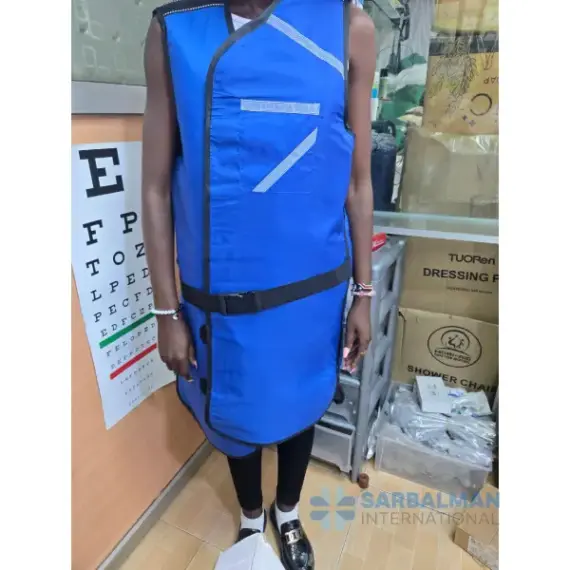Lead Aprons
Free!
Lead aprons protect clinicians and patients from scatter radiation during X-ray and fluoroscopy. Available in classic lead or lightweight composite cores, they come in front-protective, wraparound, and vest-skirt styles with common 0.25–0.50 mm Pb equivalents. Ideal for hospitals, dental and veterinary imaging, and interventional labs. Buyers choose them for reliable attenuation, ergonomic comfort, and easy care that keeps staff protected case after case.
Description
Lead aprons are personal protective garments designed to shield the body from scatter radiation during X-ray–based procedures. They are worn by clinicians, technicians, and sometimes patients anywhere fluoroscopy or diagnostic imaging is performed. Modern aprons come in classic lead and lightweight composite or lead-reduced options, with wraparound, front-protective, and vest-skirt styles to balance coverage and mobility.
Key features and benefits:
• Effective attenuation of scatter radiation across common imaging energies.
• Multiple lead-equivalence options (often 0.25, 0.35, and 0.50 mm Pb) so facilities can match protection to procedure complexity and local policy.
• Ergonomic designs such as vest-and-skirt sets, padded shoulders, and belt support to reduce back and shoulder strain during long cases.
• Optional accessories including thyroid collars, gonad shields, and head protection for fuller coverage.
• Durable outer fabrics that resist cracking and are easy to clean.
Typical use cases and industries:
• Hospitals and imaging centers: fluoroscopy, interventional radiology and cardiology, orthopedics, urology, GI, pain management.
• Dental and maxillofacial clinics: panoramic and intraoral X-rays.
• Veterinary practices: small-animal and equine imaging.
• Industrial and research settings: non-destructive testing and laboratory X-ray work (where applicable PPE is required).
How it compares:
• Traditional lead vs lead-reduced or lead-free composites: composites are lighter and improve comfort, while classic lead remains a dependable choice for robust shielding; selection often balances weight, attenuation, and budget.
• Front-protective vs wraparound: front-protective is lighter for short exposures; wraparound boosts lateral and posterior coverage for prolonged or mobile procedures.
• Vest-skirt sets distribute weight to hips, reducing fatigue versus one-piece gowns.
Quality and care notes:
• Choose the lead-equivalence and style aligned with your radiation safety officer’s guidelines. Many facilities prefer 0.35 or 0.50 mm Pb for longer or higher-dose procedures.
• Inspect regularly for cracks or thinning; store hanging on wide, supportive racks to prevent creasing.
• Clean with approved wipes; avoid harsh chemicals and high heat that can damage shielding media.




